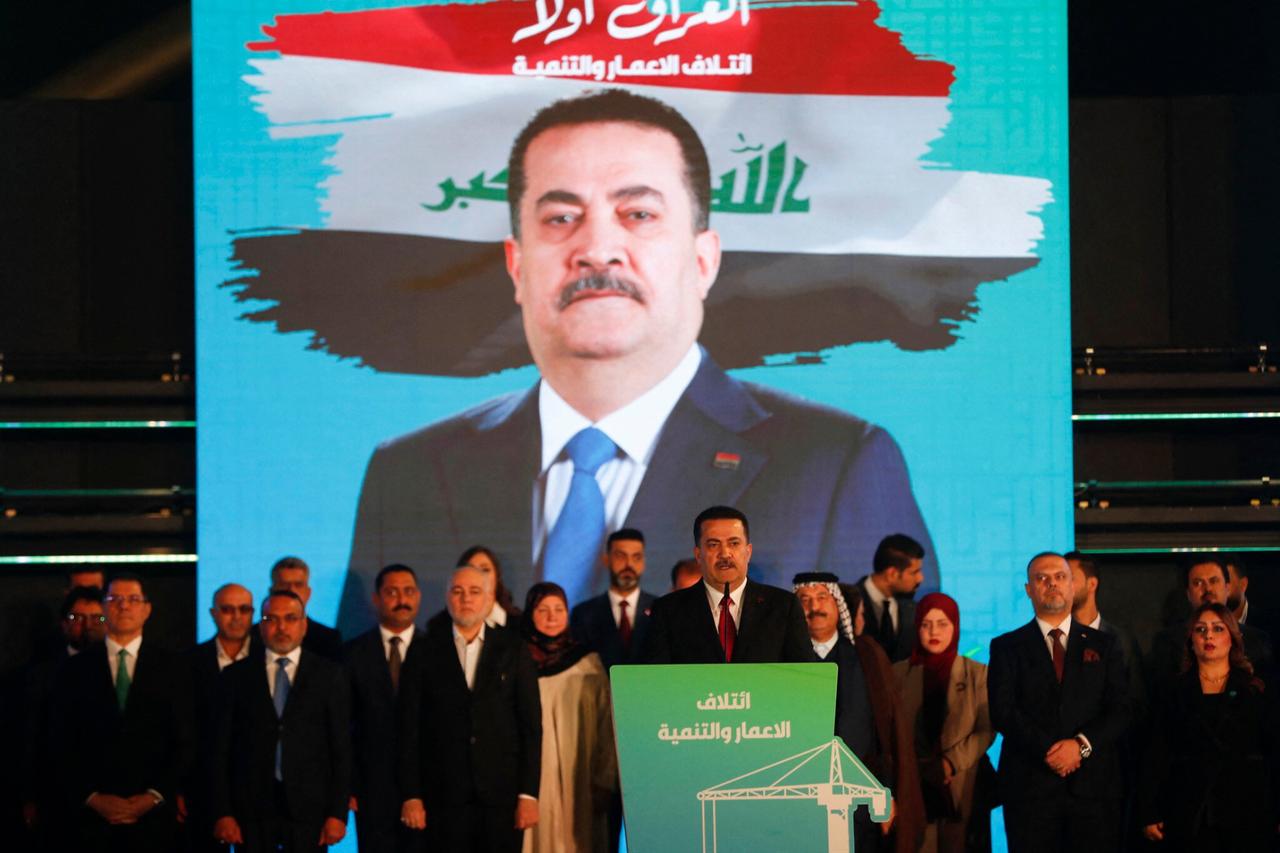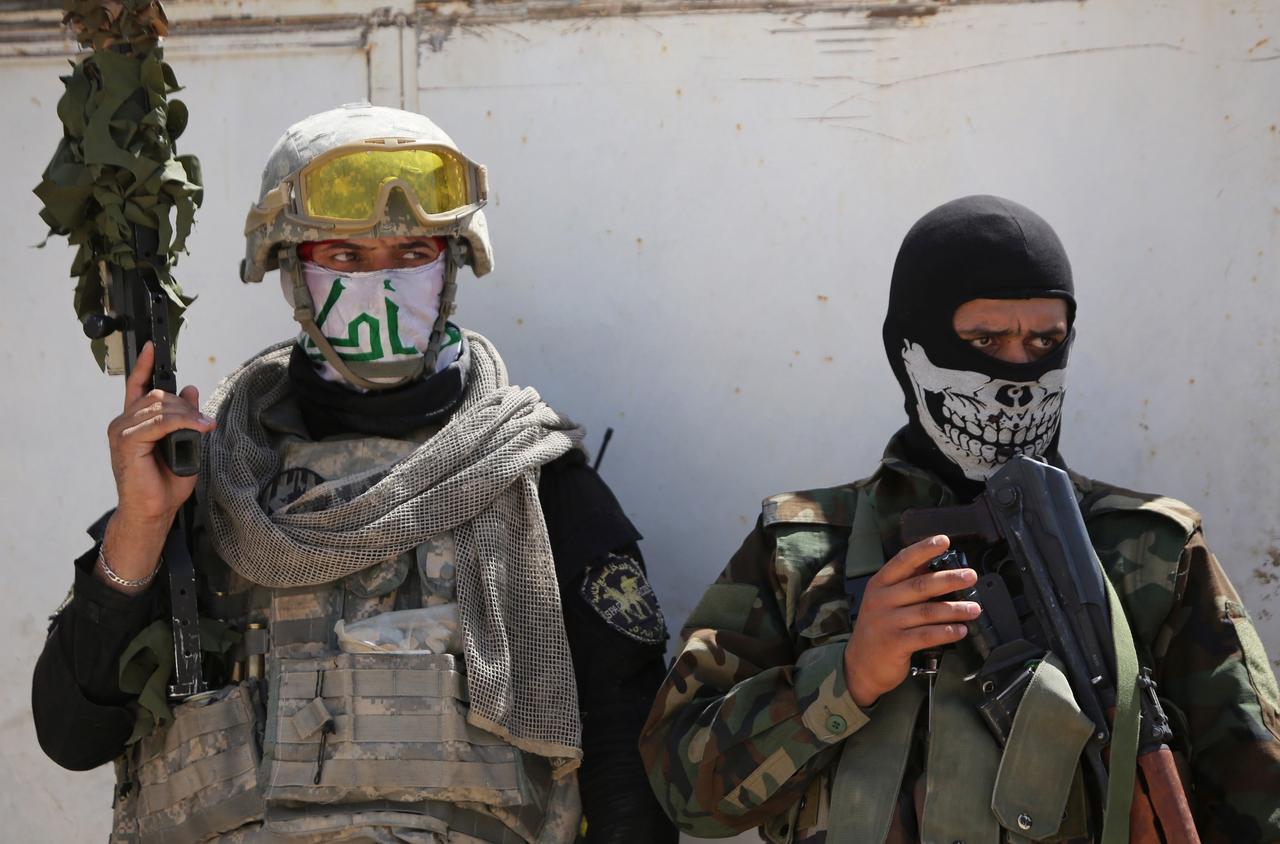
Iraq’s latest parliamentary elections on Nov. 11 unfolded under a climate that few expected. Prime Minister Mohammed Shia al-Sudani’s coalition emerged as the largest bloc with 46 seats, but the path to forming a government may still drag on for months as parties haggle over a viable majority.
Yet the actual story lies beyond Baghdad’s arithmetic. To understand what these results actually mean, one must view them through a regional lens.
Despite Iran’s lower-profile posture throughout the campaign period, voting patterns revealed that groups aligned with Tehran still managed to retain substantial ground.
Their organizational discipline, networks of patronage, and ability to mobilize identity-based voters offset assumptions that Iran’s regional setbacks would automatically weaken its Iraqi allies.
Meanwhile, voter turnout and the rise of Prime Minister Mohammed Shia al-Sudani emerged as defining features. Al-Sudani’s success reflected a complex mix of public dissatisfaction with militia influence and support for his governance-focused, stability-oriented platform.
Beneath the surface, Iraq’s electorate is signaling fatigue with the militia-centric order that has dominated Shia politics for two decades, while the United States tightens pressure on armed groups.
Together, these forces are reshaping the political logic in Baghdad and forcing Iran, once the uncontested architect of Shia power, into a reluctant strategic rethink. This election signals not just another round in Iraq’s endless coalition haggling but almost a referendum on the future of Shia authority in the Middle East with its results.
Iraq’s Shia political arena remains far from monolithic. Contrary to widespread perceptions abroad, not all Shia factions operate under a single external umbrella, nor do they share an ideological core. Instead, Shia politics is distributed across four broad currents, each with distinct motivations and political behaviors.
The first includes groups ideologically tied to Iran, rooted in shared revolutionary narratives and long-standing security partnerships. These organizations maintain armed wings and political parties, carrying significant weight inside the PMF. The second is the Sadrist movement, which distances itself from Iran and draws strength from its populist messaging and strong “Iraqi identity” rhetoric.
A third current consists of younger, more secular-leaning Shia actors who advocate democratic reforms and institutional modernization. Their influence remains limited but symbolically important.
Finally, pragmatic factions prioritize tactical alignments and economic interests, navigating the political process through short-term arrangements rather than rigid ideological anchors.
Prime Minister Sudani’s ascent demonstrates how these strands intersected. Initially selected as a compromise candidate by Iran-aligned blocs, he gradually expanded his support base through cautious management of domestic and external pressures. The absence of Muqtada al-Sadr from parliamentary politics further enabled al-Sudani’s rise, leaving a vacuum that reconfigured power balances within Shia politics.
By election night, al-Sudani’s formation had secured 46 seats—making it the largest single bloc—while Iran-aligned alliances collectively gained around 120 seats across various lists.

For the first time in years, Iraq’s Shia majority is openly rejecting the armed political structures that have defined post-2003 power. This shift is not abstract.
Every armed actor of Iraq who is willing to move into politics becomes more reasonable and begins to move away from radicalism since they start to have more to lose, as becoming a part of the state mechanism is something that also drives normalization, which also brings responsibility.
The reality of the country, however, is that political longevity requires either armed power, economic muscle, or deep-rooted family networks. Al-Sudani’s party, for example, without being in government, would evaporate.
The Sadr movement is sustained not just by family legacy but by militia weight. Kurdish political presence is anchored in the Peshmerga. Maliki, despite lacking armed units, survives through deep-state networks. Ammar al-Hakim endures through a historic conciliatory family brand.
Yet the public appetite for gun-backed politics is seemingly collapsing.
Figures like al-Sudani have begun rising precisely because they embody this new, sober Shia politics. His support does not come from militia clout but from presenting a moderate, governance-focused alternative. Even traditional powerholders—Kurdish parties with their Peshmerga, the Sadrists with their historic militia networks, and Maliki with his deep-state ties—are facing a recalibration moment.
One of the main reasons for this appetite is to avoid pushing Iraq into even greater instability. Israel’s growing willingness to strike—across Gaza, Syria, Qatar, and potentially Iraq—has fundamentally altered the strategic landscape.
A government in Baghdad that is heavily tied to Iran or dominated by powerful militias would instantly become an exposed target. There is no longer any “protective environment,” as the US has been the only actor between Iraq’s involvement in Israeli airstrikes.
Washington’s posture indicates growing impatience with armed groups that refuse to evolve into political actors. Ahead of the election, the U.S. designated four more militia factions as terrorist organizations, signaling that militia leaders could become direct targets if they resist demilitarization.
Since 2018, some groups have chosen to enter politics earlier and more systematically. Asaib Ahl al-Haq and the Badr Organization have long maintained political wings. Others, such as Kataib Hezbollah, resisted overt participation until recently, while factions like Harakat al-Nujaba still reject political engagement.
Motivations differ across these groups. For some, political participation offers institutional durability and access to state resources. For others, it is a strategic shield against sanctions or targeted strikes.
The United States aims to prevent Iran from replicating its militia model elsewhere by pressuring armed groups to either integrate politically or face costs.
This changing mood puts Iran in a difficult and unfamiliar position. Tehran is weaker than at any point in recent memory—far less capable, far less assertive, and deeply aware that the old militia-centric approach is unsustainable.
While Iran still seeks to protect its network of allied groups, it also understands that a heavily militarized Shia politics invites escalation it can no longer manage. And everyone knows it, including Iran.
Tehran doesn’t want to disarm its militia allies. But it increasingly has no choice. A chaotic Iraq invites intensified U.S. pressure and opens doors for Israeli operations.
Ironically, a stable, civilian-led Iraq now serves Iran’s survival more than its expansion.
The conclusion is unavoidable: Iran will seek a hybrid model that shifts influence from guns to diplomacy, institutions, and political dialogue. Not because it wants to, but because circumstances leave it little room.